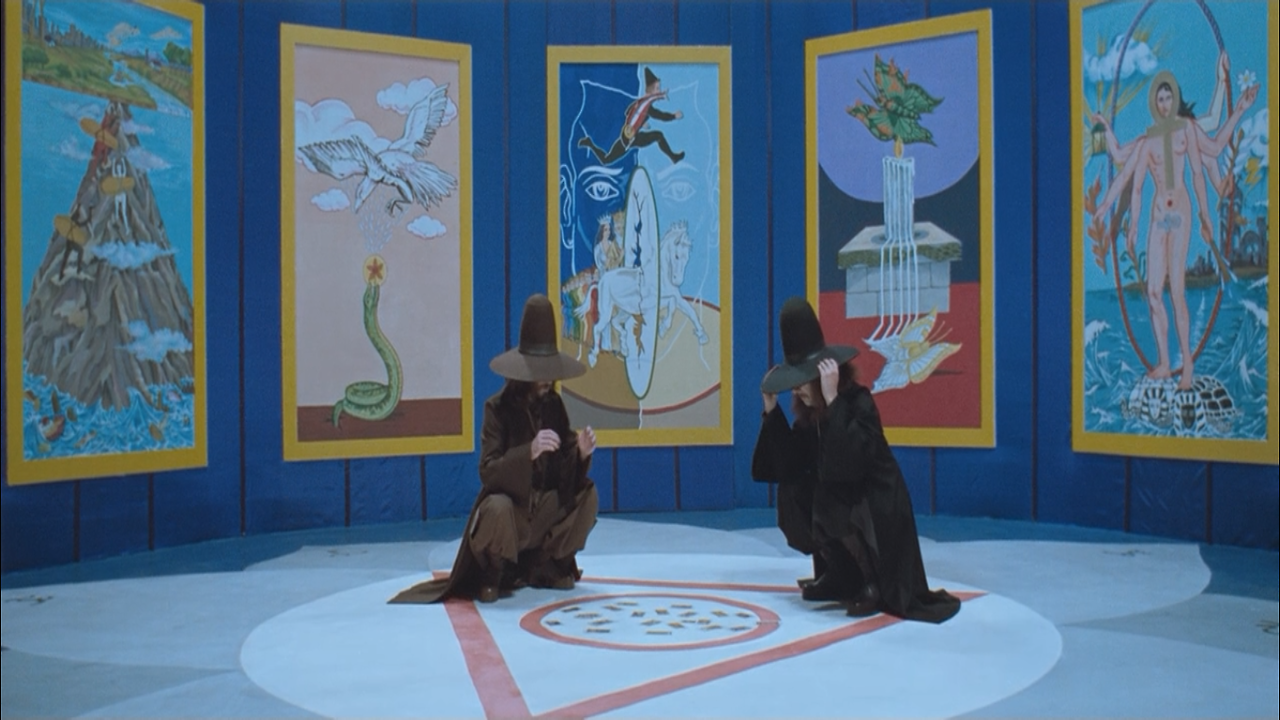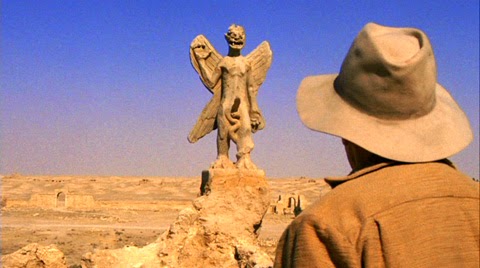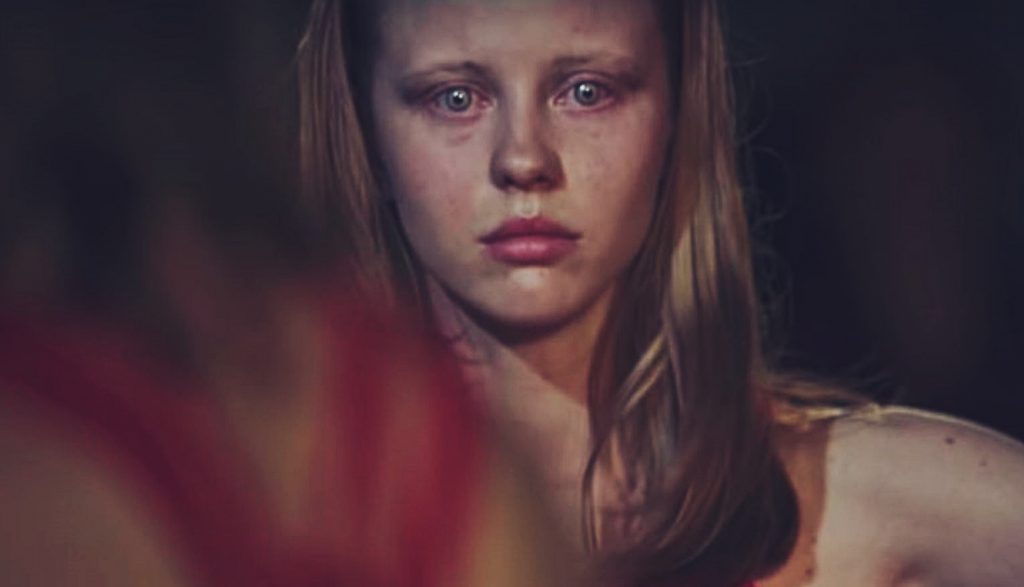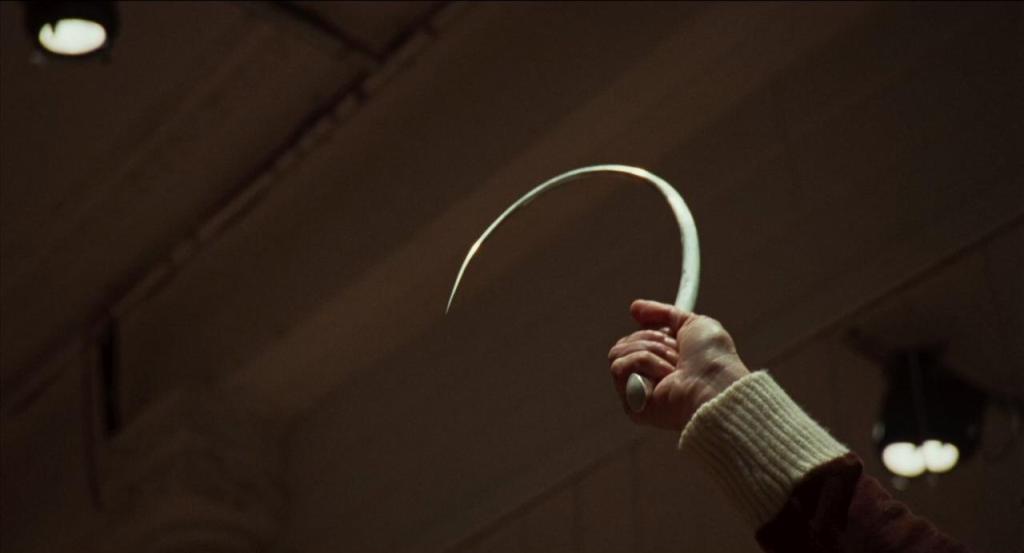
The Mahabharata (1989) Directed by Peter Brook.
By H.B. Gardner
Since there is so much real dark drama of apocalyptic proportions attending the world in the news these days, we decided to take a break from the diabolical for this article and to take a foray into the arcane arena of spiritually profound theatre. Peter Brook’s production of The Mahabharata – an ancient Indian epic rendered into English by an international cast – is filled with universal and perennial spiritual truths inculcated over millennia in the world’s last surviving, ancient, high Pagan culture’s spiritual tradition – Hindu India. And the nearly 5 and a half hour film version is available to view for free on Youtube! So if you are bored with your quarantine routine, try something a little different for your spiritual-mystical-creative edification. Link to view below.
“It remains the most accessible and understandable version of any Indian epic for a western or English speaking audience.”
Approaching Peter Brook’s ‘The Mahabharata’
If you are new to Peter Brook’s film version of The Mahabharata, there are a few things to keep in mind before watching it.
- This is not a typical Hollywood style movie. It is more akin to a Public television theatrical miniseries than a big budget film. The sets – in keeping with the original theatre production and modest budget – are simple and austere when compared with standard film fare. The well-costumed, English speaking actors are themselves the set pieces as they move through a timeless elemental realm of earth, water, fire and ice. The cast is composed of a group of highly adept theater performers gathered from across Europe, Africa, India, Japan, the USA and other countries; and each person carries their own tone and accent which brings a unique originality, color and life to their characters. Any “special effects” are done simply and in a theatrically “naive” fashion – as if on-stage; or they are merely suggested by adept acting skill (which will delight those who appreciate theatre). It may appear a bit obscure at first. But, being directed by the great Peter Brook, one will easily find themselves engaged after the initial 15-or-so-minutes which are spent setting up the back-story.
- This is also not a Bollywood style movie. You will not be distracted by fake gold, paste jewels, blue painted gods, or protagonists breaking into extended song and dance scenes every 15 minutes. The goal of this entire boiled-down production is to express the universality of the original story with due respect to it’s native culture, not to dazzle with “Indian-ness”.
- Be prepared to suspend disbelief and enter A Magical Reality. The story is metaphorical, has many layers, and can be read on various levels. Millennia’s worth of mystical Indian culture carries a lot to absorb. Questions of good and evil, right and wrong, and the choices each must make to fulfill their individual destiny are examined. Before you sit down to watch Peter Brook’s The Mahabharata, say to yourself: “Once upon a time…” and just go with it.
Before you sit down to watch Peter Brook’s The Mahabharata, say to yourself “Once upon a time…” and just go with it.

Yoshi Oida as the warrior Drona
The film should be approached as it is: an original theatrical production which has been adapted for – and translated into – a movie format. The international cast of theatrical actors with their varied looks and accents truly enhances the accessibility of the source material and open a passage to the universal message of the story.
Link:
View ‘The Mahabharata’ on Youtube
Peter Brook
English theatre and film director Peter Brook (born 1925, aged 95 when this article was written, RIP July 2, 2022) was an internationally renowned personage in theater and cinema. He has received numerous awards and honors throughout his career; and his work is wide and ranging from a production of Dr Faustus for which he employed the aging occultist Aleister Crowley to give suggestions for the conjuring scenes, Shakespere, and beyond… including a highly controversial staging of Strauss’s Salome with sets by Salvador Dalí, and an effective re-staging of Puccini’s La bohème using sets dating from 1899. From 1947 to 1950, he was Director of Productions at the Royal Opera House in London. Brook has been influenced by the work of Antonin Artaud and his ideas for his Theatre of Cruelty as well as others like G. I. Gurdjieff. He directed the first film version of William Golding’s classic Lord of the Flies in 1963; and won a Tony award for directing Marat/Sade in 1966 which he directed as a film in 1967. In 1970, with Micheline Rozan, Brook founded the International Centre for Theatre Research, a multinational company of actors, dancers, musicians and others which travelled widely in the Middle East and Africa in the early 1970s.
Mahābhārata
In the mid-1970s, Brook, with writer Jean-Claude Carrière, began work on adapting the Indian epic poem the Mahābhārata into a 9 hour stage play performed over 3 nights. It was performed outdoors, in a quarry, as well as in theaters. The stage production was first performed in 1985 and toured until 1989 and then made into a nearly 5 and a half hour televised mini series. It is this filmed version of the theatrical production which we are writing about here. Click the Link below this line to view it on Youtube.
Link: view ‘The Mahabharata’ on Youtube

The warriors receive zen-like archery training from their teacher in The Mahabharata.
Ancient Roots
First, it must be said that even thinking of attempting to present a theatrical production of The Mahabharata for a western audience is an idea most would unanimously consider to be impossible. But Peter Brook is a theatrical wizard able to direct talented performers and dexterously manipulate all bare resources at his disposal to remarkable effect. The Mahabharata is an epic Indian poem which has been described as “the longest poem ever written”. At about 1.8 million words in total, the Mahābhārata is roughly ten times the length of the Iliad and the Odyssey combined, or about four times the length of the Rāmāyaṇa, the other major Indian epic poem. The bulk of the Mahābhārata was probably compiled between the 3rd century BCE and the 3rd century CE, with the oldest preserved parts older than around 400 BCE. The original events related by the epic “probably” fall between the 9th and 8th centuries BCE.
The original events related by the epic “probably” fall between the 9th and 8th centuries BCE.
So this is an old, old story. It has travelled far and wide and is still highly regarded not only in India but also in Thailand, Indonesia and all other parts of Asia where it is still told and retold and performed in perpetuity with profound regard to it’s perennial message and philosophical truths.
The Game of Dice, Exile & War
The film is broken into three parts. It begins with The Game of Dice which leads to Exile in the Forest and eventually War. The story climaxes in a tremendous war between two sides of closely related royal family clans. At just the point when the long anticipated battle is about to begin at the trumpeting signal of the blowing of a conch shell by Arjuna – a major hero figure in the story – as he stands in his chariot between the two gathered armies, he suddenly loses his nerve when faced against familiar faces of family, friends and cousins and revered teachers on the other side of battle. It is at this very point that his close friend Krishna – said to be an avatar of the great god Vishnu – who is serving as his chariot driver, lovingly chides him for this abrupt and shameful turn of poise, and leads him inwards to the truth of not only his own soul and destiny but the ultimate revelation of the entire universe. This is the portion of the epic known as the Bhagavād-Gīta or Song of The Lord which is the most famous of the revered Hindu scriptures. This is often lauded as conveying the true heart of Yoga, which most westerners – who think of yoga as merely a series of physical poses and breathing exercises – fail to grasp. Practicing any Yoga without attention to the ancient Indian spiritual context out of which Yoga arose is not only shallow but terribly misguided.
“This is often lauded as the true heart of Yoga which most westerners – who think yoga is merely a series of physical poses and breathing exercises – fail to grasp.”
The Film
But in this filmed version a lot has been necessarily set aside from the epic poem; and only the essential bare bones of the story – which tells of the struggle between two groups of cousins in the Kurukshetra War and the fates of the Kaurava and the Pāṇḍava princes and their successors – is kept. Of course, Indian cinematic productions of The Mahabharata have been in production ever since film cameras landed in Indian hands. But the accessibility of these Indian film versions are limited and will mostly serve only to confuse, vex and otherwise frustrate your average, non-Indophile, English speaking audience. This is where Peter Brook’s and Jean-Claude Carrière’s adaptation serves us well, as it is able to express the essence of the story while keeping it infused with much of it’s legendary mystical and philosophical background. It remains the most accessible and understandable version of any Indian epic for a western or English speaking audience. It may also serve as a jumping-off point for those curious to gain some understanding of the depths of ancient Indian philosophy.

A bed of arrows is the only comfortable place to rest for a highly revered dying warrior.
Brook took the main cast for an extended stay in India even before rehearsals began. The cast immersed themselves in the world of The Mahabharata for years and merged with the characters they portrayed. The costumes were commissioned and created in India by craftspeople.
“The show was a culmination of all of Brook’s work, all his research into theatres, acting and actors. We performed in canyons in Australia and standing on top of cliffs. It was 12 hours in the theatre, with intervals, and we never worried whether audiences would respond badly to the length. You could watch it in parts or all together. For an actor, it was a total experience, not just: I’m an actor learning my lines.” – from the book The Mahabharata, Peter Brook’s Epic in the Making, by Garry O’Connor
“Peter Brook is a theatrical wizard able to direct talented performers and dexterously manipulate all bare resources at his disposal to remarkable effect.”
As the great director Peter Brook commented upon his time spent in India:
“Whatever the aspect of human experience, the Indian has indefatigably explored every possibility. If it is that most humble and most amazing of human instruments, a finger, everything that a finger can do has been explored and codified. If it is a word, a breath, a limb, a sound, a note – or a stone or a color or a cloth – all its aspects, practical artistic and spiritual, have been investigated and linked together. The line between performance and ceremony is hard to draw…” – from the book The Mahabharata, Peter Brook’s Epic in the Making, by Garry O’Connor








 Communist Chinese censorship has far reaching tentacles…
Communist Chinese censorship has far reaching tentacles…




























 On his religious views, Jodorowsky has called himself an “atheist mystic”; a statement which just barely scratches the surface of this original and pioneering Magician. He has a profound understanding of psychology and the traumas inherited from family, along with symbology, magick, the Tarot and spiritual alchemy – all of which has enhanced his work and – through his art – opened people’s minds to some of the deeper strata of human experience. This has not always occurred in a smooth fashion for the film maker. In fact, it has often been a struggle to have a wider showing of his work and there have been more than a couple of outrages along the way.
On his religious views, Jodorowsky has called himself an “atheist mystic”; a statement which just barely scratches the surface of this original and pioneering Magician. He has a profound understanding of psychology and the traumas inherited from family, along with symbology, magick, the Tarot and spiritual alchemy – all of which has enhanced his work and – through his art – opened people’s minds to some of the deeper strata of human experience. This has not always occurred in a smooth fashion for the film maker. In fact, it has often been a struggle to have a wider showing of his work and there have been more than a couple of outrages along the way.





















 10. The House of the Devil (2009)
10. The House of the Devil (2009) 11. Hereditary (2018)
11. Hereditary (2018)
 13. Evilspeak (1981)
13. Evilspeak (1981)








 The mother-artist is a combination which on its own creates a dynamic tension (we know whereof we speak). Indeed, there is an automatic inner struggle for Annie to maintain a balance between supporting these two facets. She is a creator of artificial worlds in miniature. She creates miniature scenes: houses, a daycare, a hospital room, a funeral home, and – in a bizarre pseudo meta revelation – even a replica of her own planned exhibition; and she peoples them with perfectly scaled mannequins which she paints and positions in realistic ways. Annie is fighting to maintain a grip on her world, a world which is steadily and increasingly slipping away from her. The subtle cracks in the edifice of the Graham family are – like the demonic formulas scratched into the walls of the house – showing from the start. Annie and her family are themselves (like miniature mannequins) in the grip of much greater powers than they can possibly realize. It is as if they are themselves being artificially manipulated by the art of unseen hands as they move about their daily existence.
The mother-artist is a combination which on its own creates a dynamic tension (we know whereof we speak). Indeed, there is an automatic inner struggle for Annie to maintain a balance between supporting these two facets. She is a creator of artificial worlds in miniature. She creates miniature scenes: houses, a daycare, a hospital room, a funeral home, and – in a bizarre pseudo meta revelation – even a replica of her own planned exhibition; and she peoples them with perfectly scaled mannequins which she paints and positions in realistic ways. Annie is fighting to maintain a grip on her world, a world which is steadily and increasingly slipping away from her. The subtle cracks in the edifice of the Graham family are – like the demonic formulas scratched into the walls of the house – showing from the start. Annie and her family are themselves (like miniature mannequins) in the grip of much greater powers than they can possibly realize. It is as if they are themselves being artificially manipulated by the art of unseen hands as they move about their daily existence.


 Charlie is apparently a special child, and like her mother and grandmother she has creative artistic gifts. Creative gifts which allow her to bring forth – to birth – art into the world. Her sketching and assembling of figures made from found objects turns toward the macabre when she severs and collects the head of a kamikaze pigeon and sketches the bird’s head with a crown – indicating murky intimations of the dove of the Holy Spirit of the Annunciation of Maria – heralding the conception of a new incarnation.
Charlie is apparently a special child, and like her mother and grandmother she has creative artistic gifts. Creative gifts which allow her to bring forth – to birth – art into the world. Her sketching and assembling of figures made from found objects turns toward the macabre when she severs and collects the head of a kamikaze pigeon and sketches the bird’s head with a crown – indicating murky intimations of the dove of the Holy Spirit of the Annunciation of Maria – heralding the conception of a new incarnation.
 Annie Graham’s dramatic self decapitation in the final act (did you notice she had nabbed piano wire to accomplish this? It wasn’t until our second viewing that we realized what she was using to sever her own neck) is – in a sick and twisted way in this case – the mother’s ultimate sacrifice for the “betterment” of her children. This self decapitation echoes the Chinnamasta motif of sacrifice and feeding or nourishing her “children”. She is the sacrifice, the sacrificer and (somehow, we are left to suppose) a recipient of shares of some hellish sacrificial boon as her mother’s message implies.
Annie Graham’s dramatic self decapitation in the final act (did you notice she had nabbed piano wire to accomplish this? It wasn’t until our second viewing that we realized what she was using to sever her own neck) is – in a sick and twisted way in this case – the mother’s ultimate sacrifice for the “betterment” of her children. This self decapitation echoes the Chinnamasta motif of sacrifice and feeding or nourishing her “children”. She is the sacrifice, the sacrificer and (somehow, we are left to suppose) a recipient of shares of some hellish sacrificial boon as her mother’s message implies.

 But Charlie’s head (also apparently retrieved by grave-defiling cultists and brought to the treehouse) has been fixed upon a life sized, undressed mannequin icon – reminiscent of those dressed saints and madonnas paraded through streets on holy days – as a kind of cult effigy and object of worship and devotion. This is echoing both Annie’s mini mannequin figurines and Charlie’s strange sculptures which she seems so preoccupied with fixing heads on. The undressed state of the icon reflects Chinnamasta’s own nudity which is known as digambara or “sky clad” as symbolic of the deity’s transcendent state and accounts for King Paimon’s cultists’ nudity.
But Charlie’s head (also apparently retrieved by grave-defiling cultists and brought to the treehouse) has been fixed upon a life sized, undressed mannequin icon – reminiscent of those dressed saints and madonnas paraded through streets on holy days – as a kind of cult effigy and object of worship and devotion. This is echoing both Annie’s mini mannequin figurines and Charlie’s strange sculptures which she seems so preoccupied with fixing heads on. The undressed state of the icon reflects Chinnamasta’s own nudity which is known as digambara or “sky clad” as symbolic of the deity’s transcendent state and accounts for King Paimon’s cultists’ nudity.

 The demon King Paimon is presented as an entity which hijacks the bodies of those it possesses until using them up to serve its own purposes. We are witnesses to seeing the demonic force obsess and possess members of the Graham family leading to it (the demon) obtaining its targeted host at the finale. The father, not being blood related to Annie’s mother, is spared the “Hereditary” possession and becomes a mere casualty, a burnt offering made of love, a sacrifice to the greater evil.
The demon King Paimon is presented as an entity which hijacks the bodies of those it possesses until using them up to serve its own purposes. We are witnesses to seeing the demonic force obsess and possess members of the Graham family leading to it (the demon) obtaining its targeted host at the finale. The father, not being blood related to Annie’s mother, is spared the “Hereditary” possession and becomes a mere casualty, a burnt offering made of love, a sacrifice to the greater evil. Should we have been left with a more ambiguous ending in which the supernatural and psychotic elements could be left up to personal interpretation? Should we have been left guessing if Annie Graham is, after all the spooky ephemera, merely another hardworking American mom in a psychotic midlife crisis? Observing the long-standing successful Unholy Trinity of
Should we have been left with a more ambiguous ending in which the supernatural and psychotic elements could be left up to personal interpretation? Should we have been left guessing if Annie Graham is, after all the spooky ephemera, merely another hardworking American mom in a psychotic midlife crisis? Observing the long-standing successful Unholy Trinity of 



































